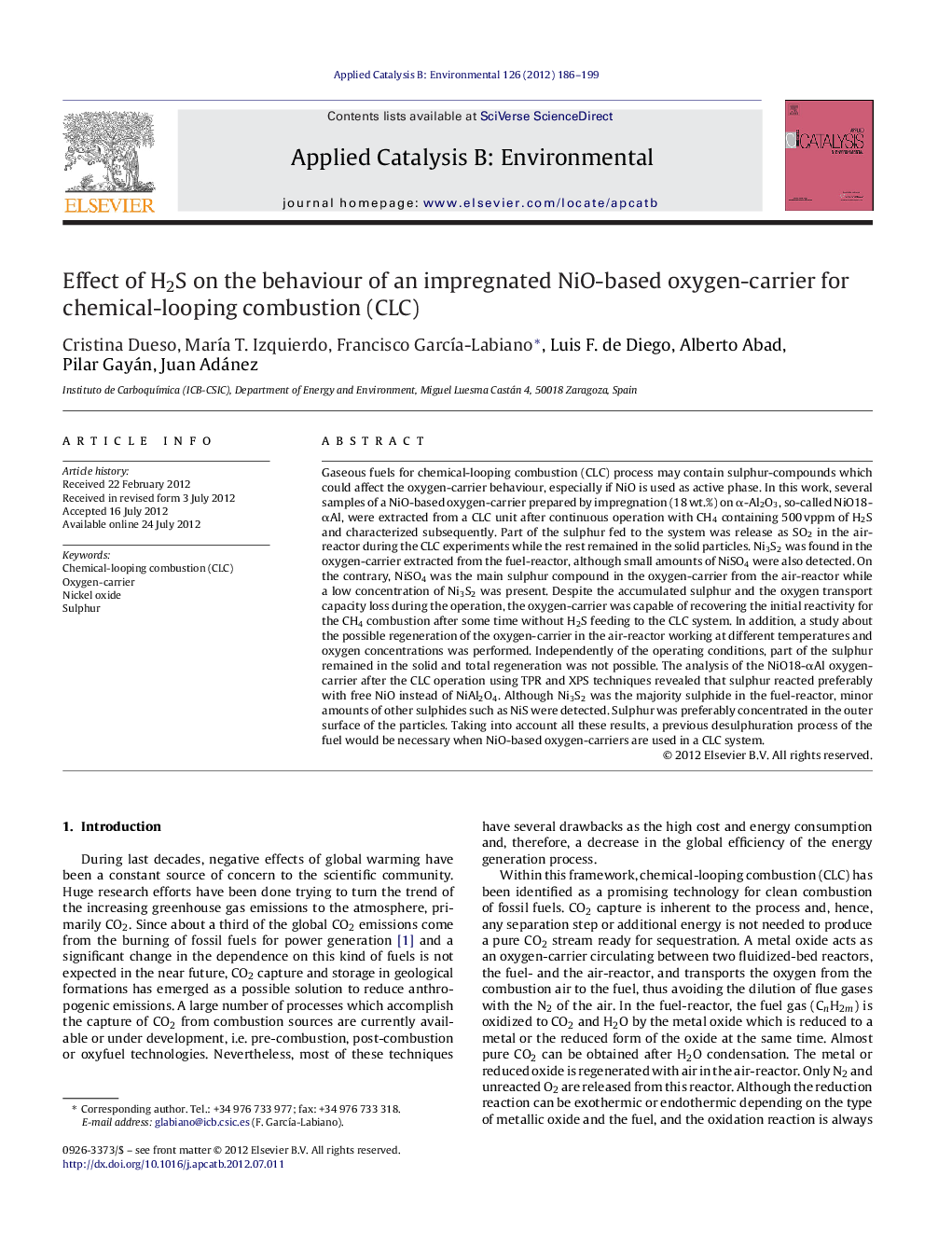| Article ID | Journal | Published Year | Pages | File Type |
|---|---|---|---|---|
| 46543 | Applied Catalysis B: Environmental | 2012 | 14 Pages |
Gaseous fuels for chemical-looping combustion (CLC) process may contain sulphur-compounds which could affect the oxygen-carrier behaviour, especially if NiO is used as active phase. In this work, several samples of a NiO-based oxygen-carrier prepared by impregnation (18 wt.%) on α-Al2O3, so-called NiO18-αAl, were extracted from a CLC unit after continuous operation with CH4 containing 500 vppm of H2S and characterized subsequently. Part of the sulphur fed to the system was release as SO2 in the air-reactor during the CLC experiments while the rest remained in the solid particles. Ni3S2 was found in the oxygen-carrier extracted from the fuel-reactor, although small amounts of NiSO4 were also detected. On the contrary, NiSO4 was the main sulphur compound in the oxygen-carrier from the air-reactor while a low concentration of Ni3S2 was present. Despite the accumulated sulphur and the oxygen transport capacity loss during the operation, the oxygen-carrier was capable of recovering the initial reactivity for the CH4 combustion after some time without H2S feeding to the CLC system. In addition, a study about the possible regeneration of the oxygen-carrier in the air-reactor working at different temperatures and oxygen concentrations was performed. Independently of the operating conditions, part of the sulphur remained in the solid and total regeneration was not possible. The analysis of the NiO18-αAl oxygen-carrier after the CLC operation using TPR and XPS techniques revealed that sulphur reacted preferably with free NiO instead of NiAl2O4. Although Ni3S2 was the majority sulphide in the fuel-reactor, minor amounts of other sulphides such as NiS were detected. Sulphur was preferably concentrated in the outer surface of the particles. Taking into account all these results, a previous desulphuration process of the fuel would be necessary when NiO-based oxygen-carriers are used in a CLC system.
Graphical abstractFigure optionsDownload full-size imageDownload as PowerPoint slideHighlights▸ H2S in the fuel affects the reactivity and the oxygen transport capacity of NiO-based oxygen-carriers. ▸ Sulphur reacts preferentially with NiO in the particles instead of NiAl2O4 > Ni3S2 and small amounts of NiS and NiSO4 were found in the fuel-reactor particles. ▸ NiSO4 and small amounts of Ni3S2 were found in the air-reactor particles. ▸ Total regeneration of the accumulated sulphur in the particles was not possible.
